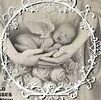
In mourning for her son’s stillbirth, Hazel Jones has taken the pain of losing her child and turned it into something beautiful. Hazel converted a part of her living room into a workshop and began cutting down formal dresses. Today, she uses the material to make burial gowns for babies who were born too soon. Hazel’s son, Matthew, died at 21 weeks, and she was determined to give his body the final tribute. She started by looking up companies that offer burial gowns. In the end, she found one that was broken and started the process of fixing it.
For those who are crafty, you can crochet a burial dress, or knit a hat. You can find instructions for making different-sized gowns on sites like Melinda’s Patterns. You can also donate gently used gowns to local hospitals. Various children’s hospitals need donations of all sizes. To find out which organizations accept donations of gently-used funeral clothing, you can search the Internet for donation programs in your area. Or, you can contact your local funeral home to find out what they accept.
Although the deceased does not usually wear shoes during his or her lifetime, some families prefer that he or she be fully attired, including shoes. You may not want to remove these shoes for the viewing, but you may have a favorite pair that you would like to preserve for the family. If you feel that shoes may not be appropriate, consider wearing socks instead. If the deceased was very sentimental, you may want to include them as part of the viewing.
Some religions require a different burial attire for men and women. Those with a strong religious conviction will wear a white shroud. While Catholics do not have a specific dress code for mourners, Muslim families do. Muslim and Jewish people generally dress their dead in white. Some Buddhist denominations dress their deceased in white to symbolize virtue. If you want to make a difference, consider making a donation to one of these organizations today.
Choosing burial clothes for a loved one can be a difficult decision. Many families choose to choose clothes based on how they would look during the deceased’s life. While the clothes are often formal and suited for a formal ceremony, you can still dress your loved one in clothing that reflects their personality. For instance, if your loved one was a sports fan, he or she would likely have chosen a sports jersey as his or her burial dress. In addition, many people choose to bury veterans in military garb.
Before burial, it is important to remove jewelry and other valuables. Some funeral directors ask families to return any heirloom jewelry or other personal items before the service. Other families donate these items to a charity. However, no matter which choice you make, a funeral director can provide you with burial gowns or robes in natural fibres. For more information, please consult with a funeral director. These professionals will be able to guide you through the process.
